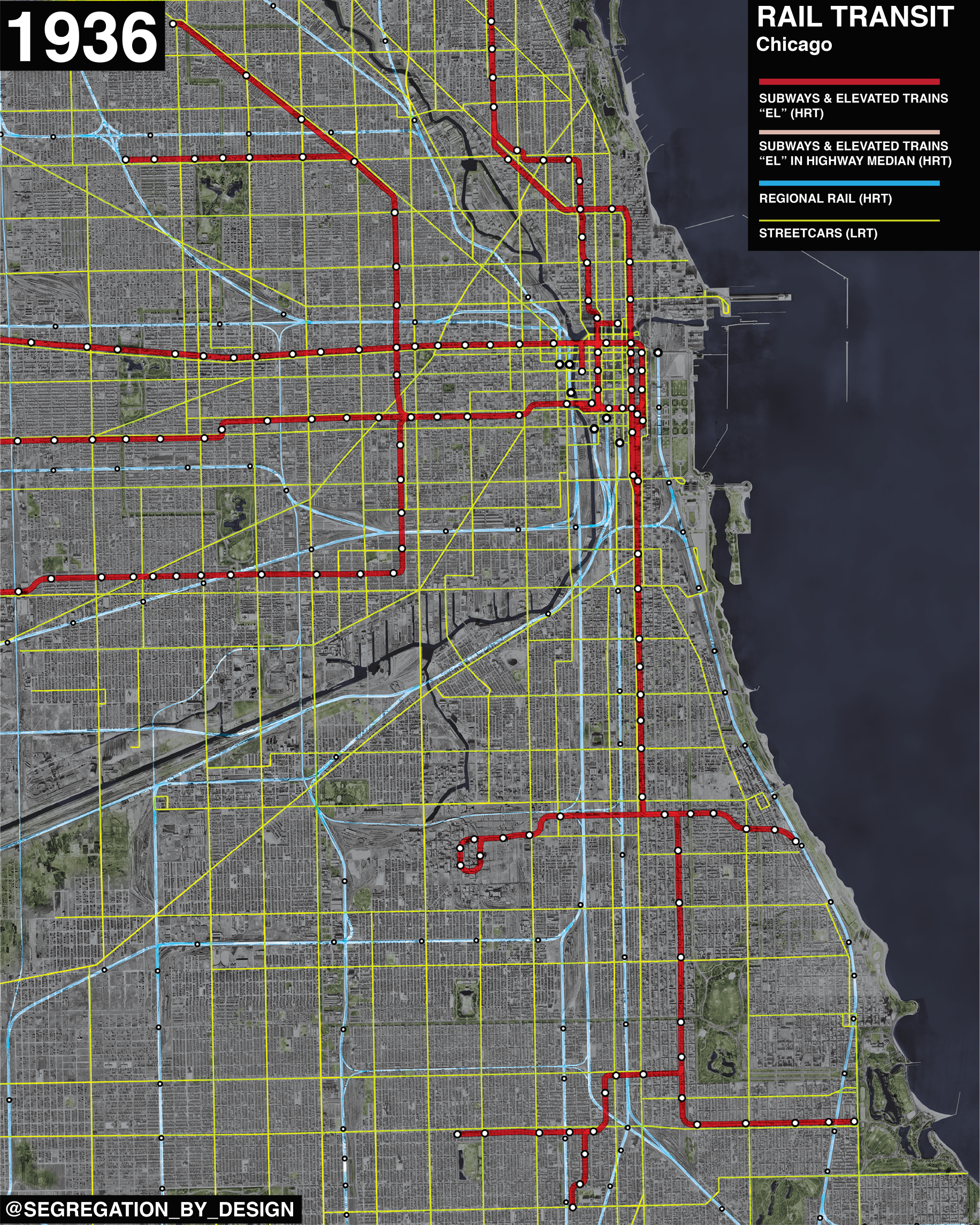CHICAGO: TRANSIT
While Chicago has retained and to some extent modernized much of its legacy rail infrastructure, the city has time and again followed flawed, automobile-based and suburban-focused planning strategies, which have led to the wholesale abandonment of large parts of the system and overall underinvestment.
Seen above: Dorchester Station and University Station on the South Side, both of which were demolished. In addition, the third and fourth images show the network in 1938 vs. today.
In general, electrified rail transit was another casualty of the federal government’s concerted effort to create a white, automobile-based suburbia. Whereas local transit systems had provided mobility within the city, the government had plowed its interstates through downtowns and urban neighborhoods in order to provide mobility OUT of the city—and to the racially-restricted suburbs. The freeways—for which the federal govt at the time provided a whopping 90% federal funding match—were the literal routes of white flight, connecting with suburbs governed by “racial covenants,” prohibiting “persons of any race other than the Caucasian race” from living there.
The rail transit system that remained in Chicago had its focus shifted from primarily serving city-dwellers to instead primarily serving suburban commuters.
The process began with the dismantling of the streetcars in the 1940s and 50s. Chicago had one of the largest electric surface rail networks in the world, with over 1,000 miles of track. These frequent electric streetcars, viewed as literally in the way of new automobiles driving from the suburbs, were quickly replaced with less frequent diesel buses.
The process continued with the abandonment of several branches and stations on the “El.” Most of these abandonments have been in the majority Black and Latino West and South Sides. On the South Side three branches of five total on the Green Line El were eliminated and the other two were cut back. Dozens of stations were eliminated during “urban renewal” as the large-scale “slum clearance” had erased the neighborhoods they had served. On the West Side, similarly, dozens of El stations were eliminated and branches trimmed. The formerly quad-track Metropolitan Main Line (capable of express services) was swallowed by the Eisenhower Expressway (I-290) when it was demolished and replaced with a smaller two track line within the highway’s median (not capable of express).
In addition to the El and the streetcars, regional rail service (today known as “Metra”) was significantly cut back as the intense government investment in highways had reduced the private operators’ profitability. Rather than have the government step and maintain operation as many other countries did, in general the US encouraged legacy transit infrastructure to fail in order to speed the adoption of a white, automobile-based suburbia. By the time the state did reluctantly step in to form Metra, many of the lines had already been abandoned. Either way, until relatively recently, Metra only continued the trend of eliminating service and stations.
Moreover, what investments in the system there have been have only further solidified the switch to a suburban focus. New El lines have been built in the medians of freeways, intended for suburban park-and-ride use.




